Natural Home Remedies For Dog Yeast InfectionsDogs with yeast infections have symptoms that are similar to those caused by allergies and bacterial infections. Dogs will itch, lick, chew, scoot and scratch to relieve their discomfort. Common signs of yeast dermatitis may include:
Dogs will lick until the skin is raw and inflamed. This can cause hot spots and lead to infection. Butt scooting is another attempt to calm the itchiness. Long-term dog yeast infections may result in blackened skin, also called "elephant skin". Brown ear discharge that resembles coffee grounds is usually a symptom of ear mites, not a yeast infection. Ear mites are contagious from one dog to another. Since yeast infections come from the inside, the good news is that they are not contagious to other pets. The clinical signs of a dog yeast infection are often quite evident. Yeast infections in dogs are typically caused by fungi like Candida albicans and Malassezia pachydermatitis. These fungi can lead to a condition known as yeast dermatitis, which manifests through symptoms such as itching, redness, and flaky skin. To confirm a yeast infection, most veterinarians will perform a cytology or culture. Cytology involves examining skin cells under a microscope to identify the presence of yeast. A culture, on the other hand, involves rubbing a swab across the affected skin and sending it to a lab for analysis. This test can also determine which medications will be effective against the specific type of fungus present. While a culture can provide a detailed diagnosis, it often takes longer to yield results, so many vets prefer cytology for quicker identification. Yeast infections in dogs can often be exacerbated by the overuse of antibiotics and steroids, which deplete beneficial bacteria and disrupt the natural microbial balance in the body. This imbalance allows yeast to flourish, leading to uncomfortable symptoms such as itching, redness, odor, blackened skin, and chronic ear infections. A natural cure for dog yeast infections focuses on restoring this microbial balance through dietary changes and supplements. By incorporating a low-carbohydrate diet that limits sugar intake, you can help starve the yeast, while supplements like caprylic acid, probiotics, and herbal remedies such as Pau D'Arco work to strengthen the immune system and promote healthy gut flora. This holistic approach not only addresses the underlying causes of yeast infections but also relieves symptoms, supporting your dog’s overall health and well-being. 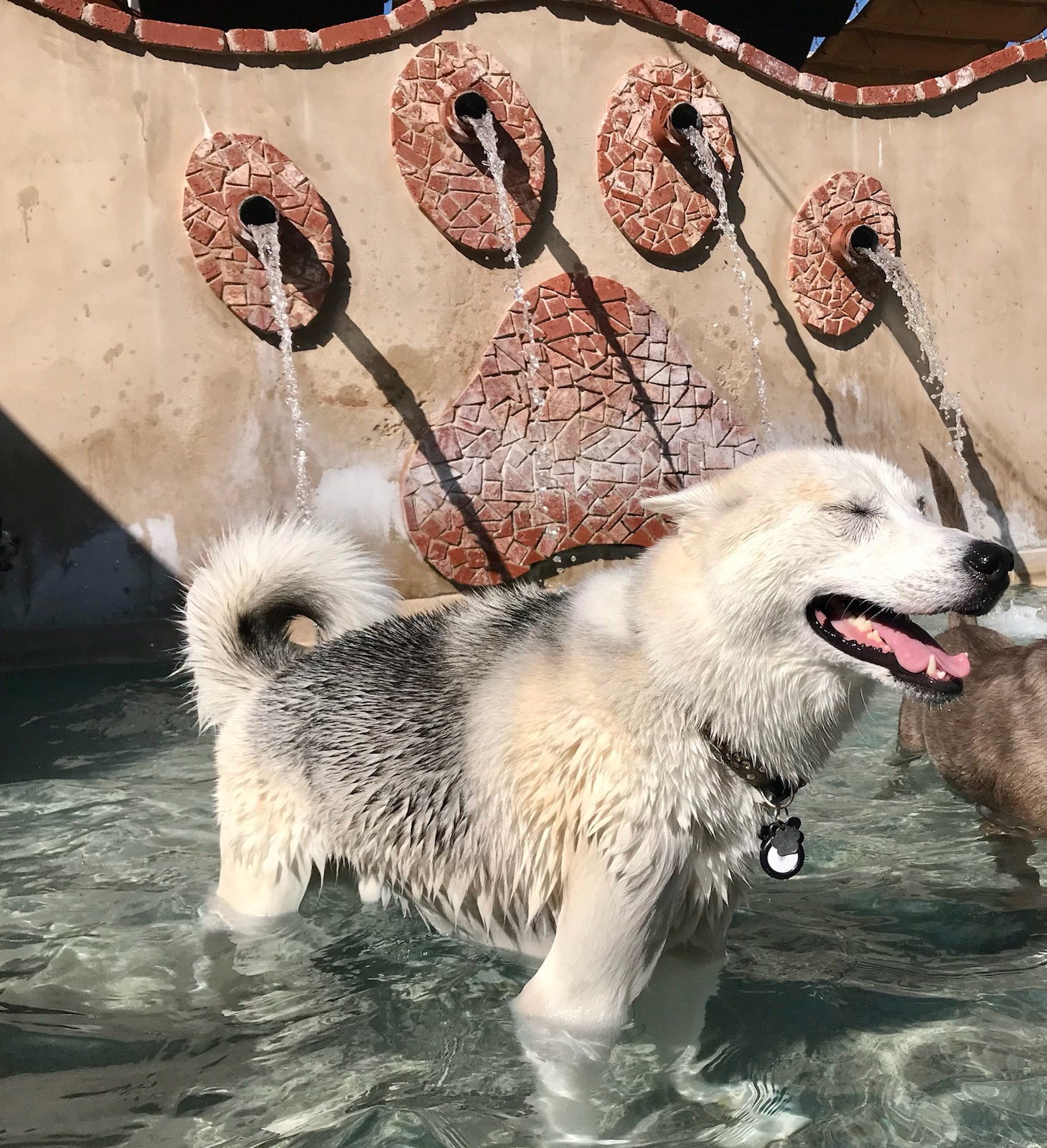
Roo "My beautiful white doggie always keeps himself clean. He loves to be in the water. We began to notice that he smelled really bad on his neck. It was coming from under his collar. He loves to swim at doggie day care and we finally realized that his skin was never drying out after swimming. It was giving him a terrible, musty odor. We tried removing his collar, but the odor would just come back. We started Roo on K9 Yeast Defense and within days, he no longer had that awful smell." - The Davis Family, California Does your dog get one yeast infection after another? Dog yeast infections can be incredibly frustrating, especially since they often come hand-in-hand with allergies and bacterial skin issues. While medications may offer temporary relief from the red patches, itching, and scratching, these symptoms often return as soon as the treatment ends. Your dog’s skin has a delicate microbiome made up of both bacteria and fungi, which plays a critical role in maintaining skin health. When this balance is disrupted - whether by medication, diet, or other factors - yeast can overgrow, leading to chronic infections. Here are some of the primary causes of recurring yeast infections in dogs:
Antibiotic and Steroid Use - Yeast symptoms often appear alongside bacterial infections, leading to the use of antibiotics and steroids. While antibiotics target bad bacteria, they also kill beneficial bacteria essential for a healthy immune system. Steroids reduce inflammation but can upset the natural balance of microorganisms on your dog’s skin. This disruption can cause yeast infections to flare up again once the medications are stopped.
Food and Environmental Allergies - Dogs can suffer from allergies just like humans. Environmental allergens like pollen or dust mites, and food allergens such as poultry or dairy, can cause inflammation and itchy skin. When your dog scratches or bites at these itchy spots, they can create small breaks in the skin, providing a perfect breeding ground for yeast and bacteria. High-Carbohydrate Diet - Many dog foods are high in starchy carbohydrates and sugars, which fuel yeast growth. Ingredients like soy, corn, potatoes, and grains turn into sugar during digestion, feeding yeast and bacteria. Even grain-free dog foods can contain starchy vegetables that contribute to the problem. Poor Digestion - If your dog’s digestive system isn’t functioning properly, it can lead to an overgrowth of yeast. Poor digestion can cause an imbalance in the gut microbiome, leading to yeast overgrowth that eventually spreads to the skin. Ensuring your dog’s digestive health is in check is crucial for preventing yeast infections. Heat and Humidity - Yeast thrives in warm, moist conditions. That’s why yeast infections often worsen during hot, humid weather. Swimming can also exacerbate the issue if your dog’s skin and ears stay wet. Make sure to dry your dog thoroughly after they swim and keep them cool and dry during humid conditions. Genetic Predisposition - Certain breeds are more prone to yeast infections due to their genetic makeup. Breeds like cocker spaniels, basset hounds, and West Highland white terriers are known to be more susceptible. 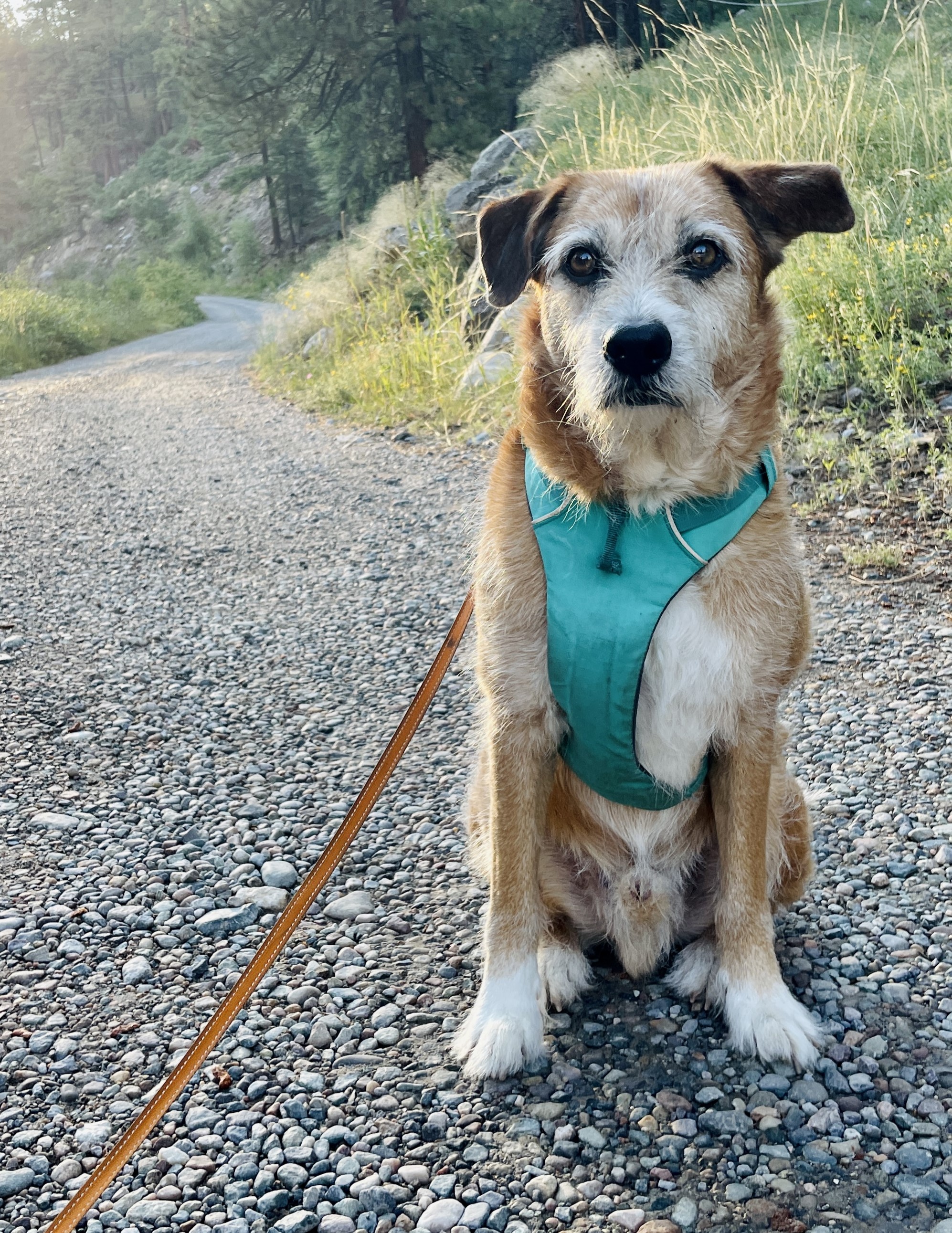
Sunny
"These supplements gave Sunny a life without wearing a cone! We struggled with Sunny’s itchy, dry, and allergy-sensitive skin for the past 3 years since we rescued him, and he wore a cone any time he was alone to prevent him from destroying himself with scratches, licks, and bites. After being on AllerEaze, Power Probiotic, Olive Leaf, K9 Yeast Defense, and Mussel Oil for about 4 months, we have seen a complete transformation with no more itching/licking/biting thus no need for a cone. We are now a peaceful and happy family that gets to enjoy their wonderful pup. Thank you, Ask Ariel!" - Emily, Ohio Traditional veterinary treatments for yeast infections can be topical or oral. For chronic yeast infections, which often include concurrent bacterial overgrowth, a combination of both is used. Topical treatment includes the use of medicated antifungal shampoos. For ear yeast infections or skin hot spots, topical ointments may be prescribed. Oral antifungal medications are often effective in treating yeast infections and Malassezia dermatitis, but they must be given for months at a time. Corticosteroid medications and plant sterol supplements can be used to reduce inflammation. Dogs are treated with antibiotics if they have developed a secondary skin infection. The use of antibiotics and antifungal medications carry the risk of potential side effects. Antifungals can have adverse effects on the liver, especially if used long term. The FDA has issued several warnings regarding the safety of certain antifungal medications in humans, as it carries the risk of severe liver injury and adrenal gland problems. The FDA does not mention whether the same effects on the liver and drug interactions would occur with dogs, but if your dog is using this medication, please contact your veterinarian. Treating yeast in dogs with natural supplements can help reduce symptoms and prevent chronic infections. Ingredients like caprylic acid are known to break down the yeast biofilm, the protective layer around yeast cells, helping to control overgrowth. Herbs such as pau d’arco, oregano, grapefruit seed extract and olive leaf extract all contain natural antifungal properties that can help kill yeast and fungal pathogens. 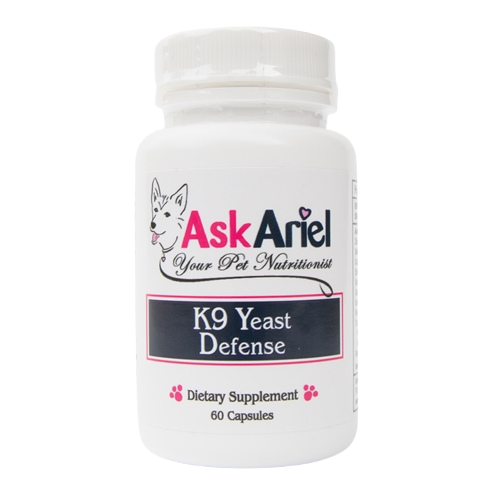 K9 Yeast Defense - K9 Yeast Defense is a dog yeast infection home remedy for chronic ear infections, licking at genitals, chewing on paws, facial rubbing and other yeast infection symptoms. It contains time-tested natural antifungal ingredients like pau d’arco, grapefruit seed extract, caprylic acid and oregano, that are scientifically proven to control fungal dermatitis in dogs. Our natural remedy helps to relieve yeast infection symptoms and restore proper balance to your dog's microbiome. K9 Yeast Defense - K9 Yeast Defense is a dog yeast infection home remedy for chronic ear infections, licking at genitals, chewing on paws, facial rubbing and other yeast infection symptoms. It contains time-tested natural antifungal ingredients like pau d’arco, grapefruit seed extract, caprylic acid and oregano, that are scientifically proven to control fungal dermatitis in dogs. Our natural remedy helps to relieve yeast infection symptoms and restore proper balance to your dog's microbiome.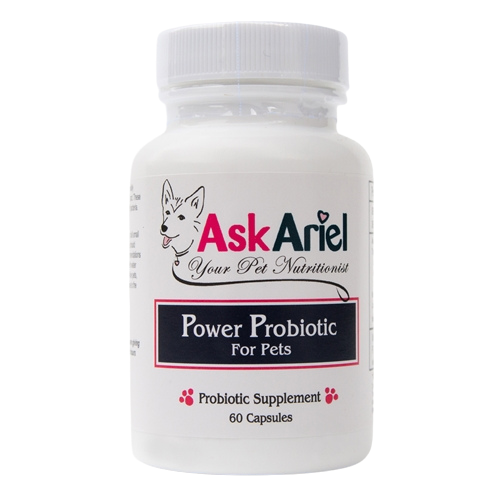 Power Probiotic - K9 Yeast Defense works best when combined with Power Probiotic to properly balance intestinal flora. When dogs take antibiotics or steroid medications, this depletes the friendly bacteria needed to control yeast overgrowth. Probiotics introduce beneficial bacteria that can crowd out harmful yeast, reducing symptoms like itching, odorand skin irritation. Power Probiotic is the best dog probiotics for yeast infections! Backed by scientific research, this powerful, multi-strain formula repopulates the good, friendly bacteria your dog's digestive system needs. It’s pure, safe and natural. Many dogs love the taste of Power Probiotic! Power Probiotic - K9 Yeast Defense works best when combined with Power Probiotic to properly balance intestinal flora. When dogs take antibiotics or steroid medications, this depletes the friendly bacteria needed to control yeast overgrowth. Probiotics introduce beneficial bacteria that can crowd out harmful yeast, reducing symptoms like itching, odorand skin irritation. Power Probiotic is the best dog probiotics for yeast infections! Backed by scientific research, this powerful, multi-strain formula repopulates the good, friendly bacteria your dog's digestive system needs. It’s pure, safe and natural. Many dogs love the taste of Power Probiotic!The best food for dogs with yeast infections is a low-carbohydrate, raw frozen novel-protein diet. Pictured is a diet for dogs with yeast infections that includes a commercial raw frozen rabbit blend, baked salmon, assorted vegetables, and fish oil. Here are a few other things to consider when choosing a diet for dogs with chronic yeast: 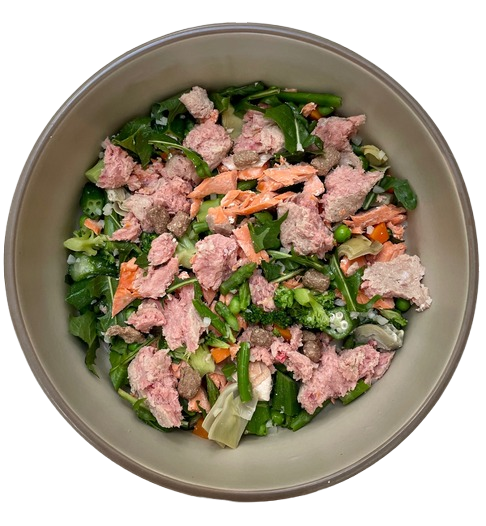
The Best Treats For Dogs With Yeast InfectionsDogs with yeast infections can still enjoy a variety of delicious and healthy treats. The best options are raw, freeze-dried meat-based treats, which are pure and free from additives like molasses or sugar. Choosing treats made from novel proteins—such as rabbit, venison, or duck—can be particularly beneficial, as these are less likely to trigger allergic reactions and inflammation.In addition to freeze-dried options, many manufacturers offer jerky treats, like ostrich jerky, and chews, such as lamb trachea, which are also excellent choices. Always check the ingredients to ensure there are no hidden carbohydrates or sugars, which can fuel yeast growth. Pure, raw freeze-dried treats, along with natural jerky and trachea chews, are the safest and most effective choices for managing yeast infections in dogs, allowing them to enjoy their snacks without compromising their health. When managing yeast infections in dogs, understanding the worst dog food for yeast is essential, as avoiding these foods can help your pup recover faster. Dry food often contains starchy carbohydrates that convert to sugar, fueling yeast growth. Even grain-free dog foods can be culprits, as they may include ingredients like sweet potatoes or legumes that can also convert to sugar. Diets high in grains such as corn, wheat, and rice can cause inflammation and skin problems, making them poor choices for dogs prone to yeast infections. Additionally, some meat proteins—like chicken, turkey, duck, and beef—can be potential allergens, triggering reactions that may exacerbate yeast issues. Dairy products like cheese are very high in sugars and should be avoided, as they can contribute to yeast problems. Products baked with yeast, including bread, as well as sweet fruits like watermelon and carrots, can worsen yeast infections. Even peanut butter, a common treat for dogs, can contain added sugars that fuel yeast growth. It’s important to choose a low-carbohydrate, hypoallergenic diet to help keep your dog's yeast levels in check. Apple cider vinegar (ACV) is often touted as a natural remedy for dog yeast infections, but its effectiveness is frequently overstated. Holistic advocates claim that apple cider vinegar can be used as a remedy for various dog health issues, including blood sugar regulation and urinary tract infections. However, scientific evidence is limited. Some people suggest using diluted ACV as a rinse or topical treatment, but there are notable downsides. Using ACV in your dog's ears on on their skin can sting, potentially making your dog more uncomfortable. Additionally, its strong, unpleasant taste may discourage dogs from consuming it in their food or water. While some dog owners do find apple cider vinegar to be helpful, it is not a miracle cure for dog yeast infections. A more comprehensive approach—such as feeding a low-carbohydrate, hypoallergenic diet paired with natural antifungal supports—is often needed to provide lasting relief from symptoms like chronic ear infections and skin problems. Dog Yeast Infections Frequently Asked Questions (FAQs)Is a dog yeast infection similar to jock itch in humans? Yes, a dog yeast infection is somewhat similar to jock itch in humans. Both conditions are caused by an overgrowth of fungi, leading to intense itching, redness, and irritation in the affected areas. Just like jock itch, dog yeast infections often occur in warm, moist areas such as the groin, underarms, or between skin folds. Both can produce a strong odor and discomfort, and both conditions require antifungal treatment to manage the symptoms and prevent recurrence. Will topical treatments be enough to treat my dog’s yeast infection? Topical treatments, like antifungal shampoos and sprays, can help manage the symptoms of a yeast infection, but they may not be enough on their own. Yeast infections often have underlying causes, such as diet or allergies, that need to be addressed to prevent recurrence. Combining topical treatments with dietary changes and supplements can provide a more comprehensive approach to treating and preventing yeast infections in dogs. Why does my vet often prescribe antibiotics when my dog has a yeast infection? Vets often prescribe antibiotics when a dog has a yeast infection because bacterial infections frequently accompany yeast overgrowth. These secondary bacterial infections can complicate the condition, making it more difficult to treat the yeast alone. Additionally, dogs with yeast infections often suffer from allergic dermatitis, where allergies lead to skin irritation and make the skin more susceptible to both bacterial and yeast infections. Antibiotics help by targeting the bacterial infection and reducing inflammation, allowing other treatments, like antifungal medications, to focus on eliminating the yeast. However, antibiotics don't treat the yeast itself and can sometimes worsen yeast infections by disrupting the natural balance of bacteria and yeast on your dog's skin. It's important to follow your vet's guidance and consider comprehensive treatments to manage both the yeast infection and any underlying skin issues like allergic dermatitis. What does a dog yeast infection smell like? A dog yeast infection often has a distinct odor, sometimes described as smelling like cheese or popcorn. This pungent smell is caused by the overgrowth of yeast on the skin, which can produce a strong, musty scent. If you notice this smell along with other symptoms like itching, redness, or discharge, it could be a sign of a yeast infection. How can I stop my dog from rubbing their face on the carpet? Dogs often rub their faces on the carpet when they're itchy from a yeast infection, though they may experience itchiness all over their body. To help reduce this behavior: Use a dog yeast infection home remedy and probiotics to address the yeast infection throughout your dog's body. Feed your dog a low-carbohydrate diet, as yeast thrives on sugars and carbohydrates. Rubbing their face on the carpet often accompanies other yeast infection symptoms, such as ear infections, red patches, or general itchiness. Addressing all of these symptoms can help provide a more comprehensive solution. Humidity plays a significant role in worsening yeast infections. If your dog spends a lot of time outside on grass or in humid conditions, this can exacerbate the issue. Consider keeping your dog indoors during humid weather and ensure their living space is dry and well-ventilated to help manage and prevent yeast growth. |
Click Here For Coupon Savings